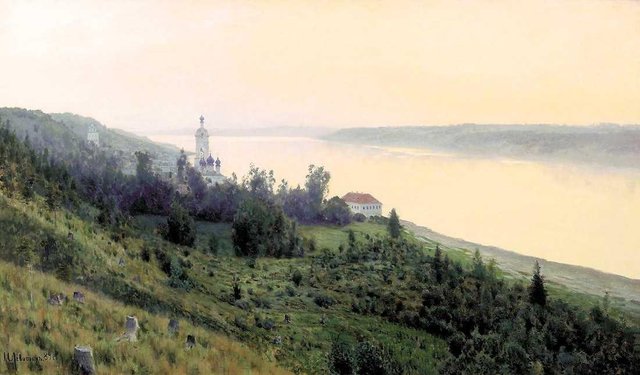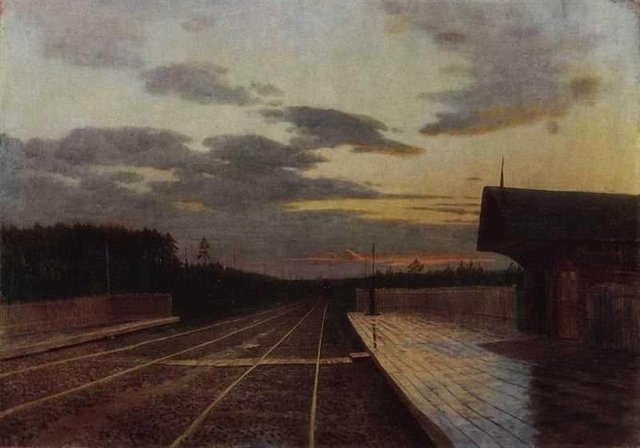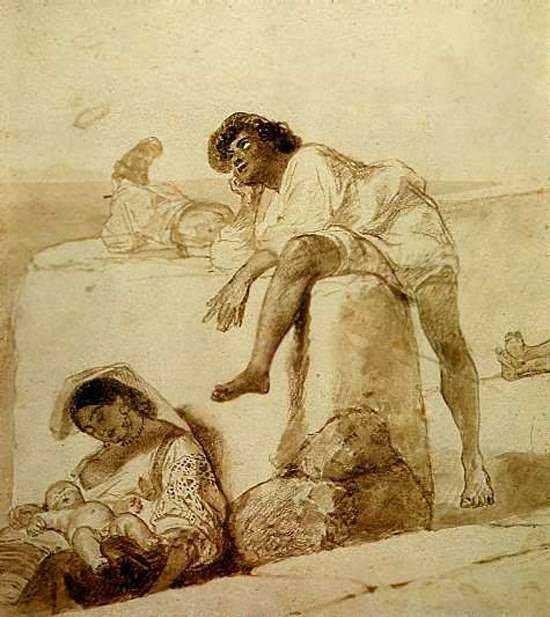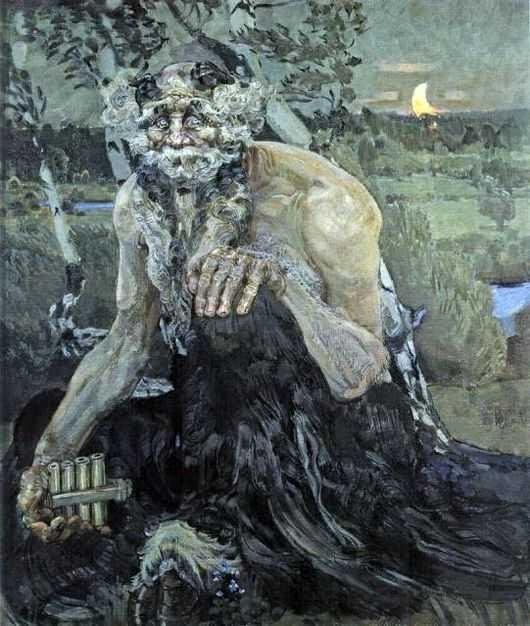To translate your vision into visual images - to convey the character and feelings of a person, the state of nature is fast, some events - the artist depends not only on drawing from nature, but on the ability to withdraw from himself.
** This ability does not rule out the need to work with nature and should not lead to too low estimates of its significance. However, constantly turning to nature, one should not follow the blind copy of all its random manifestations. It is necessary to see through the artist's eye, that is, to improve the main thing in the reality around him. **
** Perlu dicatat segera bahwa kemampuan yang jelas dimanifestasikan untuk melukis dari diri sendiri adalah fenomena yang buruk. Ada juga kasus-kasus yang berisi foto-foto yang sangat baik dari kehidupan ternyata benar-benar tidak berdaya tanpa harga milik miliknya sendiri. Namun, dalam banyak kasus, kemampuan untuk menarik diri dari satu hal atau hal yang berbeda dengan mereka. Dan yang penting adalah pengembangan kemampuan yang diberikan sejak awal. **
If a beginner from the first step of learning will complete the main job (ie, drawing from nature) with some exercises designed to strengthen the ability to pull from himself, he can achieve remarkable creative results.
** Always in the works of artists, visual memory is very important. As it progresses, it becomes easier for the master to remember the phenomenon of a particular reality, sometimes blinking in front of it, and ultimately the result can be an important detail in the execution of his intentions. **
Many artists in the past have amazed them with their rich visual memory. Great Russian landscape painter I.I. Levitan has the ability to surprisingly recover accurately in his memory of what he has seen, especially what he wrote earlier from nature. Everyone was struck by the incredible truth of these drawings and sketches.
To distinguish them from what is written from life is very difficult. Working on the scene in Plyos, Levitan studied and memorized the motives he needed, and then quickly finished the painting from memory. Thus, he created the famous landscape "Evening (Golden Ples)" and "After the Rain."


A great place is occupied by work in memory and in the work of KP Bryullov, who likes to "write in memory" pencils or watercolors and what he has seen before, and what he makes based on his impressions.
** Such an "essay" with a pencil in hand is an integral part of Bryullov's work. In fact, lying in bed with a deadly disease, he constantly creates many new scenes, drawing them on a piece of paper with sepia, then with a pencil, or watercolor. Some of the last images of this great master survive to this day. Among them is the picture "During the day." **

** Throughout his creative work, Levitan wrote many paintings, depicting his memory of the beauty of nature in different places, in different years of life. **
** The storm, which he witnessed off the coast of Italy, he can adeptly transfer to images, depicting the Crimean landscape or the Caucasus. Reflections the moon at the Bosphorus, illuminating the slick fortress Sevastopol. All this is typical for its brush, the hallmark of the artistic style. He carefully studied,memorize all natural changes, atmospheric changes, the game of light and shadow on the waves of the sea, on the mountaintop, in the crown of trees - and all virtuos reproduced from memory, creating unique masterpieces. **
** The value of the image of itself is noted by many extraordinary experts. But by this they mean not a separation from nature, but a creative attitude towards it, based on a comprehensive preliminary study. **
There is a strange opinion about the famous sea scenery painter, IK Aivazovsky. He talks about the creative methods of painters, but this applies to images, because we know that he underlies realistic imagery in art.
** Aivazovsky writes that an artist who imitates the beauty of nature, uniquely becomes his slave. The less talented person, transferring the impression to the canvas, can be a good photocopier, he can even be compared to "direct photography devices", but never a real artist! **
It is impossible to write from the nature of the movement of elements - the shimmering lightning, the gust of wind, the splashing of the waves. That's why artists should remember it, so this accident, the effects of light and shadow, create images.
** Aivazovsky explained to us some of his patterns, which are directly related to the issues that interest us. In these statements, and when referring to the work of the greatest masters of the past, we find concepts emerging soon afterwards concerning the work of artists of themselves, that is, working on memories, impressions and imaginations. **
** The moment (or element) of work from memory, presentation, impression and imagination is so closely intertwined that it is very difficult to tell the difference. Nevertheless, it is necessary to make the effort to define these concepts more clearly as a prerequisite for the development of questions from self-drawing methods. **
What is the image of the memory?
it appears that in its purest form, the image of memory can be called one in which the artist sets himself the most correct reproducing task observed, studied or taken earlier from nature.
This will be the simplest work example ** for yourself. **then we can talk about the more complicated task of reproducing from memory, a phenomenon that has been realized before, and imprinted into the mind of the artist. Remember that Aivazovsky spoke of the Bosporus moonlight, which he covered the stronghold of Sevastopol, or about the Mediterranean storm he had transferred to the Crimean coast.
** One can imagine under our circumstances such a task, when the drawer will attempt to portray from itself a model that he has studied carefully, and to describe it in another turn. In this case, the artist creates something new, but on a concrete basis, a well-studied phenomenon, which he points out from a new point of view (eg, a model in another turn) or shows it in a new combination (as Aivazovsky did in the case- case above). **
Such work can be called performance work.
- The most abstract of the direct impression of nature is the work of imagination, in which the artist fully describes the depicted. However, the abstract is still clear in this case, because the basis of our imagination is always the impression of the real world. In all areas of art, we meet works in which the artist creates a fantastic image, which he can not adequately observe in life. This will be the image created by the imagination.
** An example is the "Pan" painting by M. A. Vrubel. Despite all its majesty, it consists of real-world elements, printed in the memory of the artist. **

In order not to linger on the definition of the term that is often found "working on the impression", ** it is enough to say that impressions of certain environmental phenomena nourish our memories, our ideas and, finally, our imagination. ** Of course, therefore, many authors arbitrarily refer this term to all types of works of the artist himself.

Sangat bavus penulisannya
Downvoting a post can decrease pending rewards and make it less visible. Common reasons:
Submit
Mantap bro
Downvoting a post can decrease pending rewards and make it less visible. Common reasons:
Submit
Bereh that
Downvoting a post can decrease pending rewards and make it less visible. Common reasons:
Submit